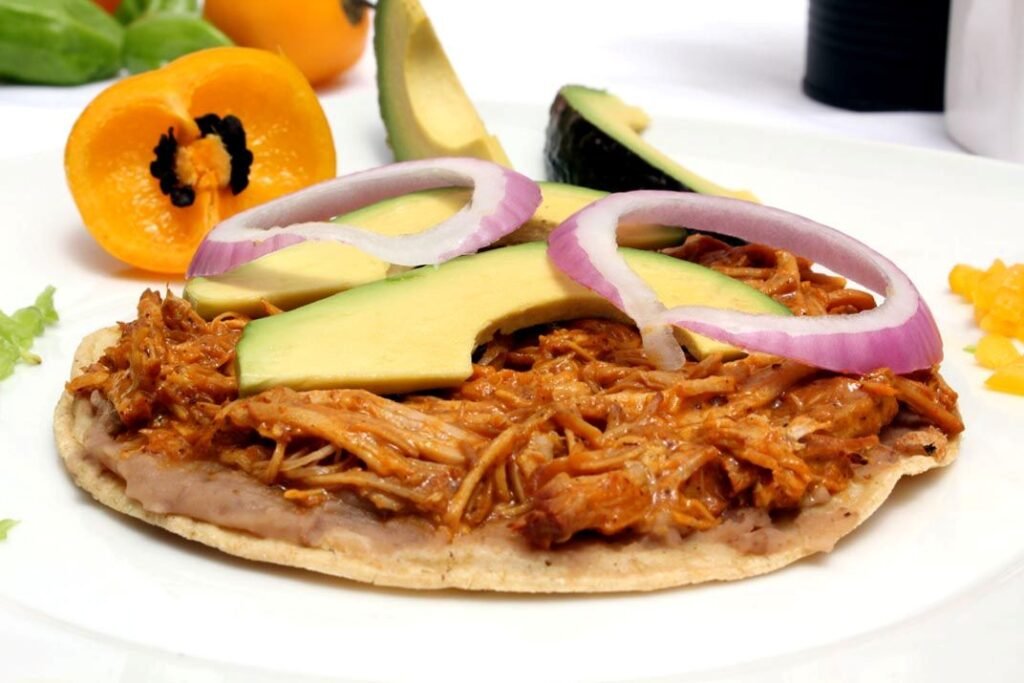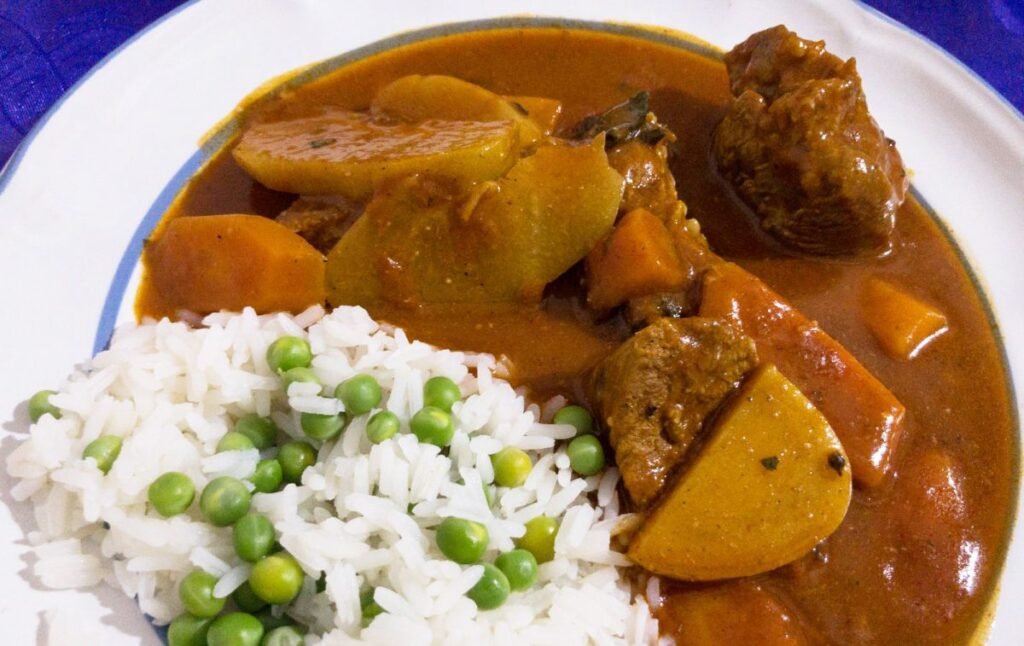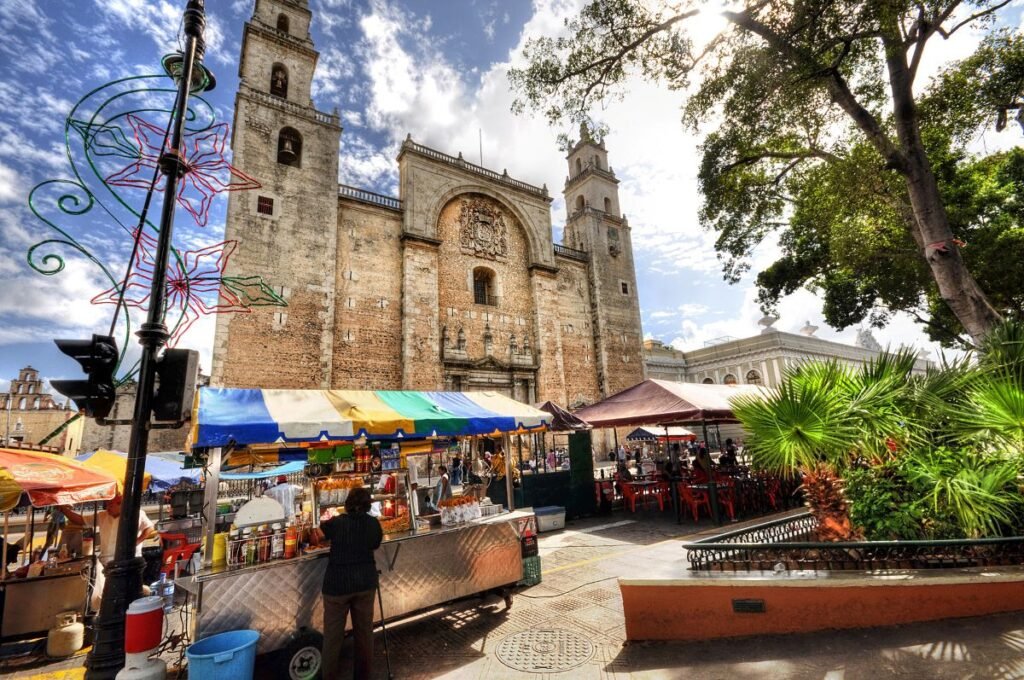Physical Address
304 North Cardinal St.
Dorchester Center, MA 02124


Mexico Food Experience
Discover authentic Mexican cuisine with our comprehensive food guide for solo travelers. From street tacos to hidden gems – explore Mexico’s culinary secrets like a local in 2025.
Have you ever wondered what it would be like to bite into a perfectly crafted taco al pastor while standing in a bustling Mexican market, surrounded by the intoxicating aromas of fresh cilantro and charred pineapple? Mexico’s culinary landscape offers independent travelers an unparalleled journey through flavors that have evolved for centuries by blending indigenous ingredients with Spanish influences. The result is something truly magical.
Having wandered through Mexico’s vibrant food scene for years, I can tell you that eating your way through this incredible country is more than just sustenance; it’s a cultural immersion that will change the way you think about food forever. The sizzle of meat on a comal, the rhythmic chopping of fresh salsa, and the warmth of hands pressing tortillas tell stories that no guidebook could ever capture.
Mexico‘s culinary culture fosters connections between strangers. Imagine sitting on a plastic stool at a modest taqueria, sharing a table with locals who enthusiastically recommend their favorite salsas. It’s these kinds of spontaneous interactions that become the heart of your travel memories.
Mexico’s culinary diversity ranges from seafood-rich coastal regions to mole-heavy mountain towns. Each area offers distinct flavors that reflect the local terroir. Independent travelers will find that Mexican street food culture thrives in an atmosphere of inclusivity. Vendors welcome curious foreigners with genuine warmth and often share stories about family recipes passed down through generations.
During my first solo trip to Oaxaca, I stumbled upon a grandmother making memelas on a street corner at dawn. She insisted that I try her green salsa, which was made with chilies that she had grown in her backyard. That five-minute encounter taught me more about Oaxacan culture than hours spent in museums ever could. In Mexico, food becomes your universal language, breaking down barriers and creating authentic human connections.
Mexican food culture revolves around customization. Don’t be afraid to point to ingredients or use simple Spanish phrases. Vendors appreciate the effort, and many speak enough English to help you choose.
Give your palate time to adjust to authentic Mexican flavors. Start with milder options, such as quesadillas or chicken tinga, and then gradually explore spicier dishes. Remember that each region has its own signature heat level. What feels mild in Yucatán might set your mouth on fire in Puebla.
Ensuring the safety of street food in Mexico requires observation rather than avoidance. The key is to choose vendors who maintain visible cleanliness standards and serve food at the proper temperature.
Look for stalls with a steady flow of customers, clean cooking surfaces, and vendors who use separate utensils for raw and cooked ingredients. Pay attention to how they handle money versus food. Reputable vendors often have an assistant manage transactions while the cook focuses on preparation.
The most memorable meals often come from the humblest-looking stalls. Take, for example, that weathered cart with the long line of construction workers. It’s probably serving the most authentic tacos in the neighborhood.
Yucatecan cuisine reflects centuries of Mayan influence combined with Caribbean and European elements. Cochinita pibil, slow-roasted pork marinated in achiote, represents the region’s signature cooking method. It is traditionally prepared in underground ovens.

Cochinita pibil
In Mérida’s hidden neighborhoods, seek out family-run sopa de lima stands. This aromatic soup, served with crispy tortilla strips and a squeeze of bitter orange, is the epitome of Yucatecan comfort food.
Oaxaca’s seven famous moles are just the beginning of the region’s culinary complexity. Visit during the Day of the Dead celebrations to witness the preparation of moles that can take days. Local families open their kitchens to curious travelers and share their techniques for grinding spices on volcanic stone metates.

Oaxaca’s seven famous moles
The coastal regions offer dramatically different ceviche preparations from port to port. In Puerto Vallarta, try ceviche made with freshly caught mahi-mahi. Zihuatanejo, on the other hand, specializes in oyster preparations that highlight the mineral-rich waters of the Pacific.

ceviche preparations
Mexico City’s street food scene is always active, with different specialties available at various times of day. Fresh fruit vendors appear in the early morning, agua fresca stands offer refreshment in the afternoon heat, and evening markets fill with taco stands that operate until dawn.
Every Mexican city has multiple markets, each serving different neighborhoods and offering different specialties. While tourists flock to well-known markets like the Mercado de San Juan in Mexico City, locals prefer smaller markets that offer a more authentic experience and better prices.
Ask taxi drivers about their favorite breakfast spots to discover secret market stalls. These conversations often lead you to family-run establishments that have been serving the same recipes for decades.
Mexico’s pop-up restaurant culture thrives in unexpected places. Follow local food Instagram accounts to discover chefs who offer elaborate tasting menus in their homes or at temporary venues. These intimate experiences offer modern takes on traditional Mexican cuisine.
Design your own culinary walking tours by exploring residential neighborhoods outside of the hotel zone. Each neighborhood has its own specialties. Perhaps you’ll find morning tamales from a bicycle vendor or afternoon elotes from a cart that appears at the same corner daily.

culinary walking tours-MEXICO CITY
Just because Mexican cuisine is affordable doesn’t mean you have to compromise on quality. Street vendors often serve better food than tourist restaurants at a fraction of the cost. A full meal from a local taqueria usually costs less than one appetizer at a restaurant geared toward tourists.
| Meal Type | Best Options | Average Cost |
|---|---|---|
| Breakfast | Market fondas | $2-4 USD |
| Lunch | Comida corrida | $3-6 USD |
| Dinner | Street tacos | $1-3 USD |
| Snacks | Fresh fruit | $0.50-2 USD |
The most economical approach to dining is to eat where the locals eat. Follow groups of workers during their lunch breaks,they know which places offer the best value.
Tacos al pastor are an excellent example of Mexico’s culinary fusion. Watch the trompo spin as the cook carves perfectly seasoned pork topped with pineapple and served on small corn tortillas. Each region adds its own twist: some include cheese, while others feature unique salsa combinations.
Mexican breakfast culture varies dramatically by region. Northern states tend to favor hearty egg dishes with flour tortillas, while southern regions prefer lighter options with corn-based preparations. Chilaquiles are the perfect introduction to Mexican breakfast traditions: crispy tortilla chips bathed in red or green salsa and topped with cheese and crema.
Mexican desserts often surprise travelers with their subtle flavors and unique textures. Tres leches cake showcases the country’s dairy heritage, and churros filled with dulce de leche are the perfect street snack. Another must-try is elote preparado, grilled corn mixed with mayonnaise, cheese, and chili powder, which blurs the line between snack and dessert.
Mexican markets operate based on unwritten social codes. Vendors expect some level of interaction. A simple “Buenos días” opens the door to recommendations and better prices. Many vendors offer samples, especially of fruits or prepared foods that you haven’t tried before.
Markets excel at offering fresh ingredients and traditional preparations, but avoid purchasing items that require refrigeration unless you plan to consume them immediately. Focus on seasonal fruits, freshly made tortillas, dried chilies, and spices that can be stored easily.
Regular customers receive better service and insider knowledge about seasonal specialties. If you’re staying in an area for several days, stick with the same vendors. They’ll remember your preferences and may even suggest items that aren’t on display.
Your digestive system needs time to adjust to new bacteria and spice levels. Food safety in Mexico requires common sense rather than extreme caution. Start conservatively and gradually expand your comfort zone.
Bring along some basic digestive aids and learn how to say, “I have a food allergy,” in Spanish: Tengo una alergia alimentaria. Most vendors are familiar with common allergies and can adjust their preparations accordingly.
Avoid heavy meals late at night, as your digestive system works more slowly at that time. Fortunately, Mexican culture emphasizes the main meal during the afternoon, which aligns well with optimal digestion patterns for travelers.
Mexico’s culinary calendar follows the agricultural seasons and religious celebrations. Plan your trip for Day of the Dead in late October or early November to experience traditional mole preparations, or time it with chili harvest season from August to October to try fresh varieties.
Mexican festivals revolve around food traditions. Easter week features special bread preparations, and the Christmas season showcases unique tamale varieties. Local Saint Day celebrations often include communal meals to which travelers are welcome to join.
Q: Is street food safe for international travelers? A: Yes, when chosen carefully. Look for vendors with high customer turnover, visible cleanliness practices, and food cooked at high temperatures.
Q: How much should I budget daily for food in Mexico? A: Budget travelers can eat well for $10-15 USD daily, while those seeking mid-range experiences should budget $20-30 USD per day.
Q: What’s the best way to communicate dietary restrictions? A: Learn key Spanish phrases for your restrictions. Most vendors are accommodating and can modify dishes when given advance notice.
Q: Should I tip at street food stalls? A: Tipping isn’t expected at street stalls, but rounding up your bill or leaving small change is appreciated.
Q: What’s the difference between Mexican food abroad and authentic Mexican cuisine? A: Authentic Mexican cuisine uses fresh, local ingredients and traditional preparation methods. Regional variations are significant, and many dishes popular abroad don’t exist in Mexico.
Are you ready to embark on a culinary adventure in Mexico? Get ready to experience flavors that will redefine your understanding of Mexican cuisine. From authentic cochinita pibil to rich mole negro, Mexico’s food scene offers independent travelers an incredible culinary journey.
Start planning your Mexican food adventure today by booking your flight and accommodations through travelgoeasy.net – your trusted partner for seamless travel experiences. Don’t let this opportunity to explore one of the world’s greatest culinary destinations pass you by!
What Mexican dish are you most excited to try? Share your food travel dreams in the comments below, and let’s start planning your ultimate Mexican culinary adventure together!
This article is exclusively created for travelgoeasy.net and is protected from copying and unauthorized use. All rights reserved.
Your taste buds are about to experience flavors that will redefine your understanding of Mexican cuisine. From the first bite of authentic cochinita pibil to the last spoonful of rich mole negro, Mexico’s food scene offers independent travelers an incredible journey of discovery.




